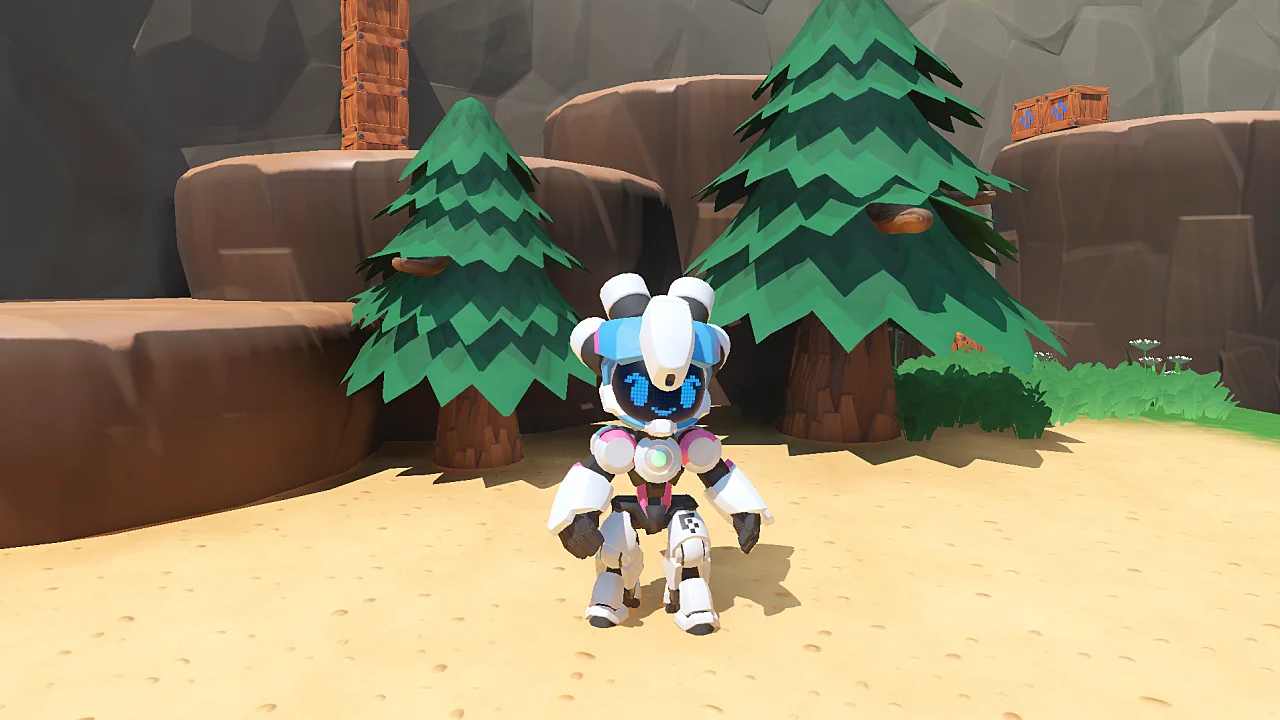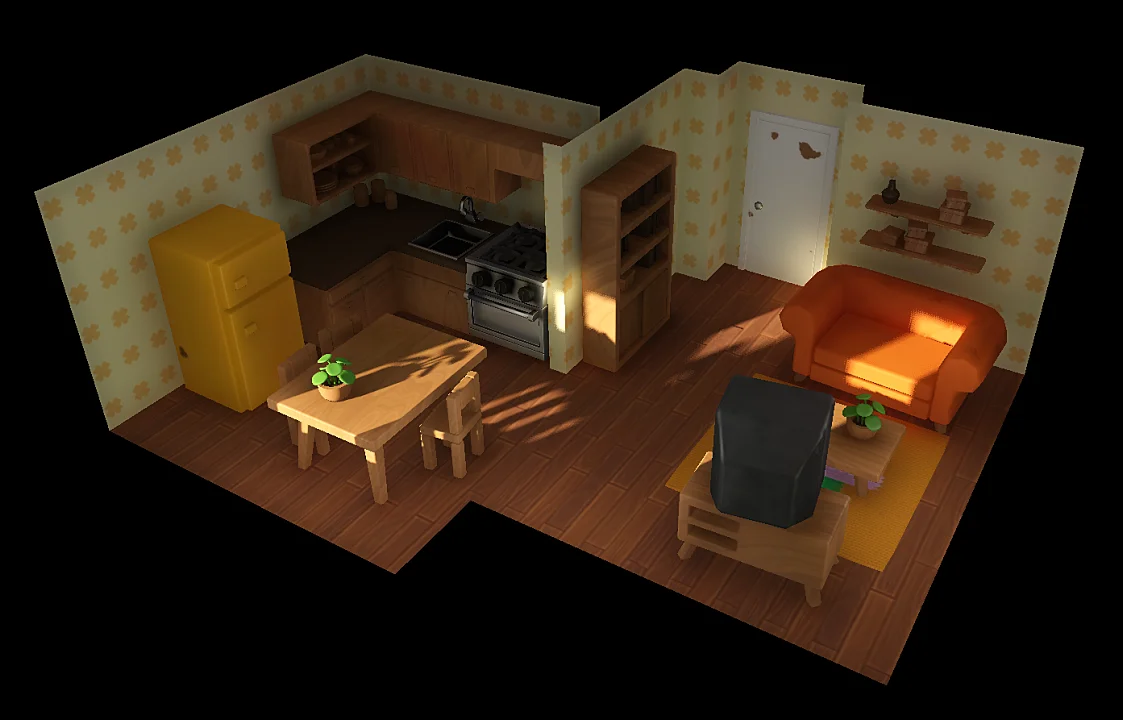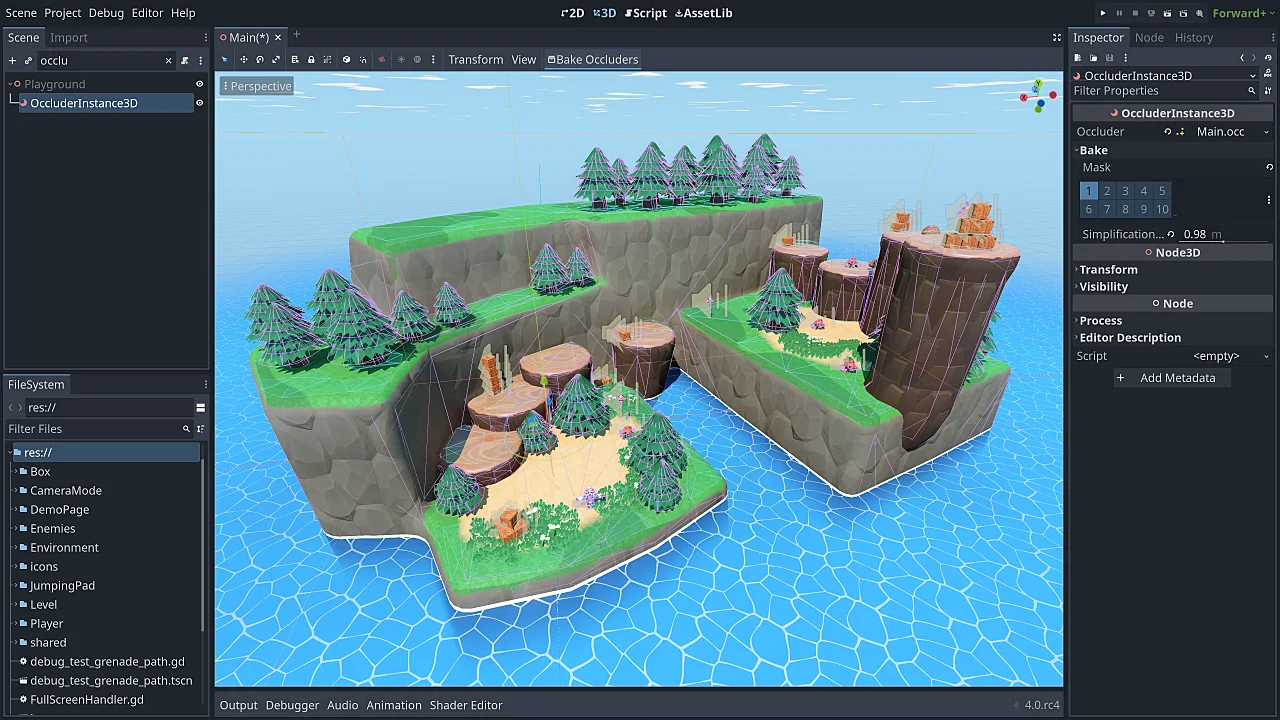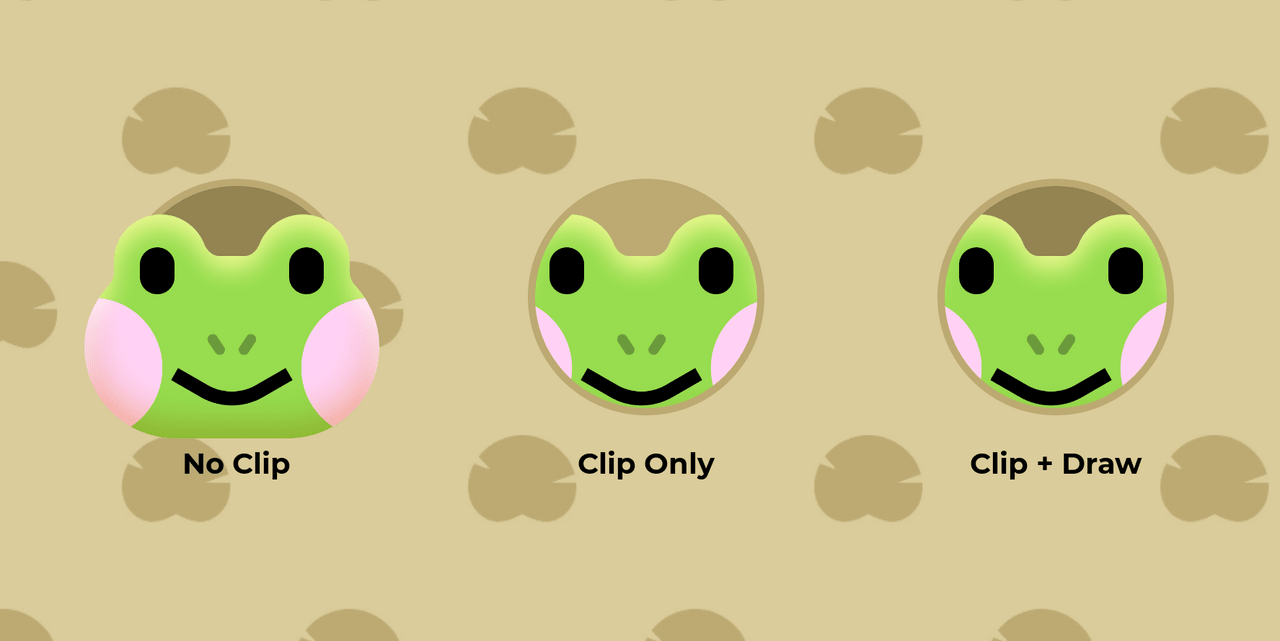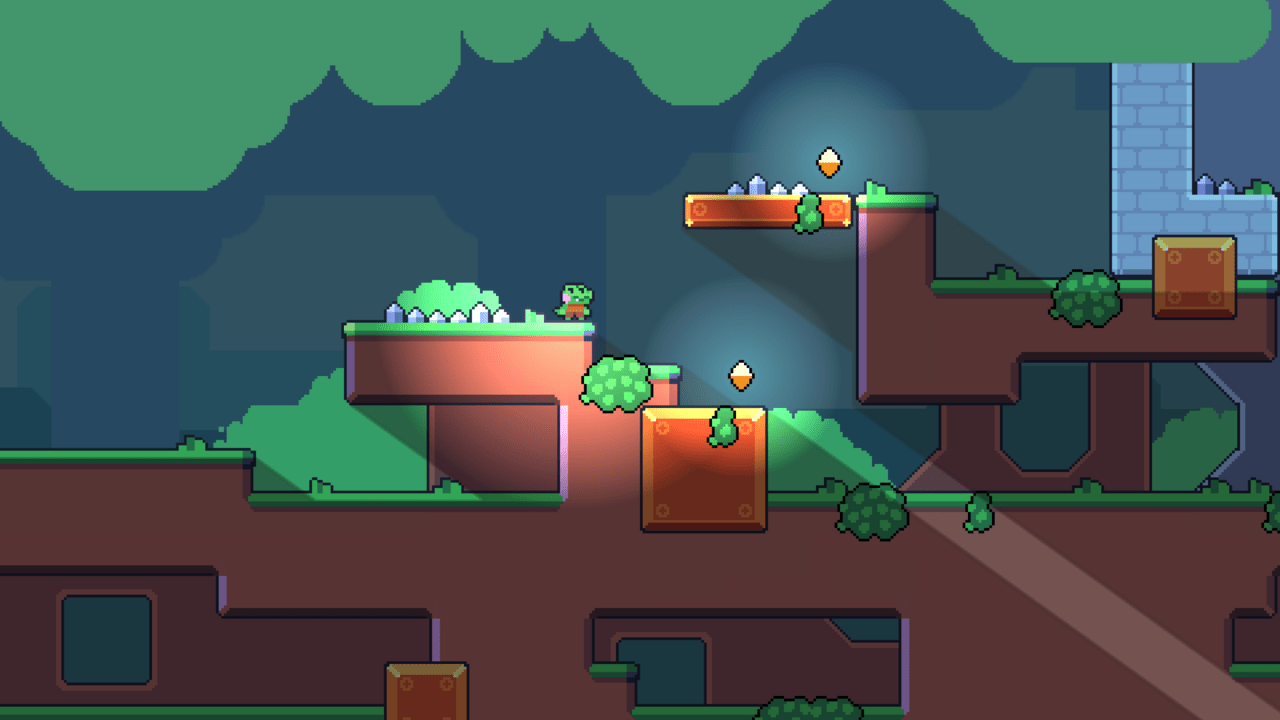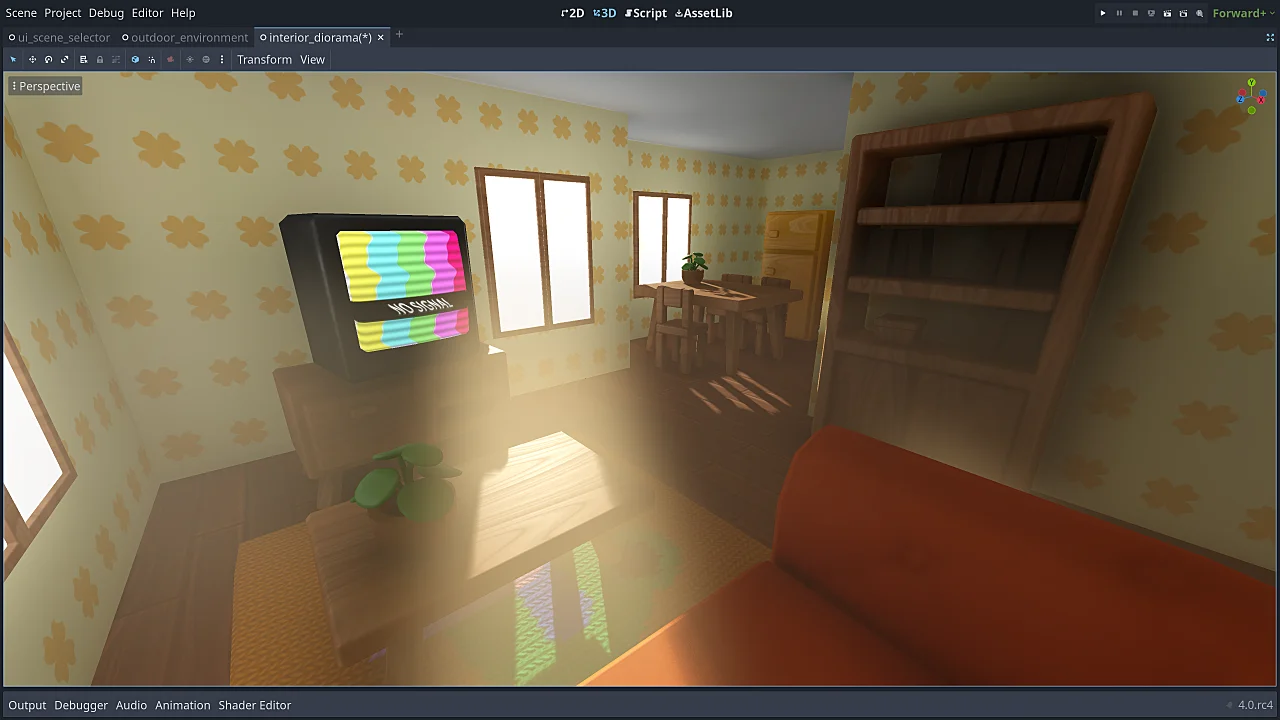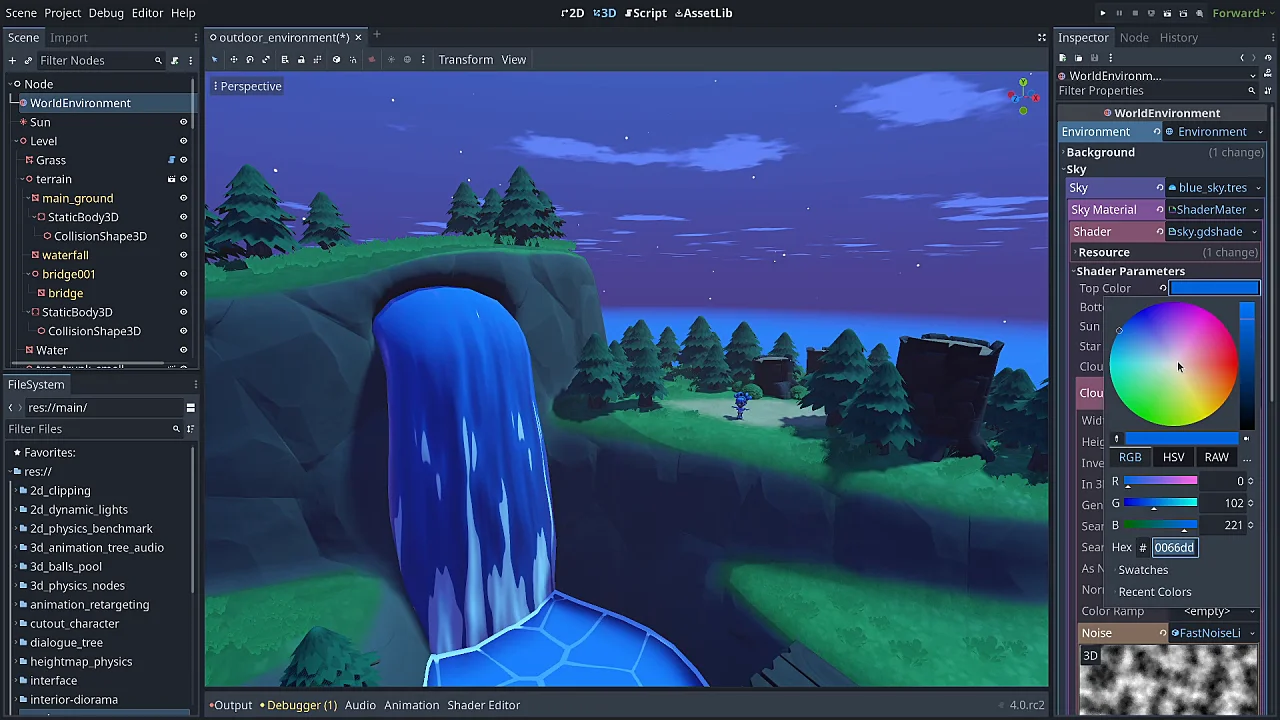Godot 4.0 is officially released ! This is Godot's largest and longest-in-the-making release to date, and with tons of new features, it's more of a great rebuild than a regular update.
The following are some changes in the new version:
3D and general rendering changes
Vulkan and the new renderer
The new version has two new Vulkan backends (cluster and mobile)
- Also integrated is an OpenGL-based compatibility renderer designed to support older and low-end devices.
- A Direct3D 12 renderer is also being developed for better Windows and Xbox support.
- It's also now possible to take advantage of AMD's Fidelity FX Super Resolution 1.0 (FSR 1.0) for dynamic and beautiful rendering at lower resolutions while keeping games running smoothly.
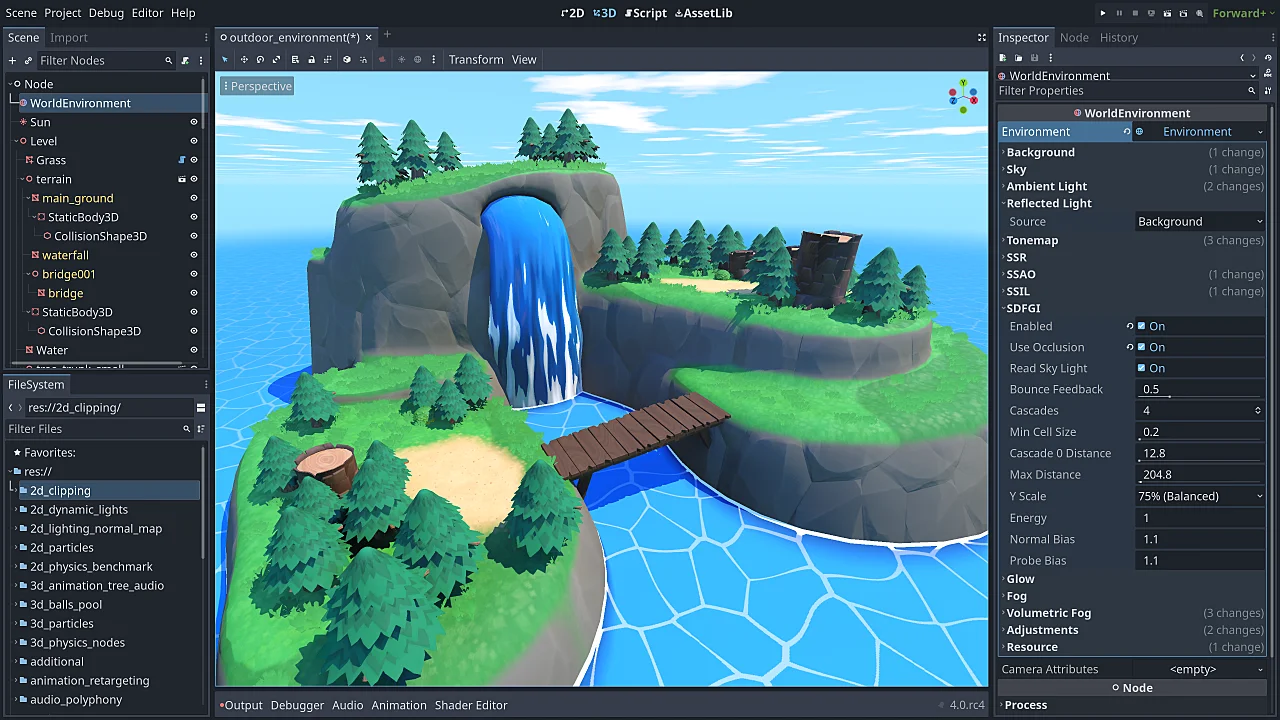
Highly improved lighting and shadows
Godot's global illumination system has been reworked from the ground up. For the first time ever, Godot 4 introduces a novel real-time global illumination technique for large open worlds. SDFGI - or Signed Distance Field Global Illumination, you can read more about it here .
GIProbe has been replaced by the VoxelGI node, a real-time solution for small to medium environments that works particularly well for interiors. Of course, it is still possible to pre-render lighting and shadows on low-end devices using lightmaps, but lightmaps now use the GPU for faster rendering.
Finally, shadows have not been great in Godot 3. Godot 4 can restart shadow rendering to achieve higher quality and provide finer control.
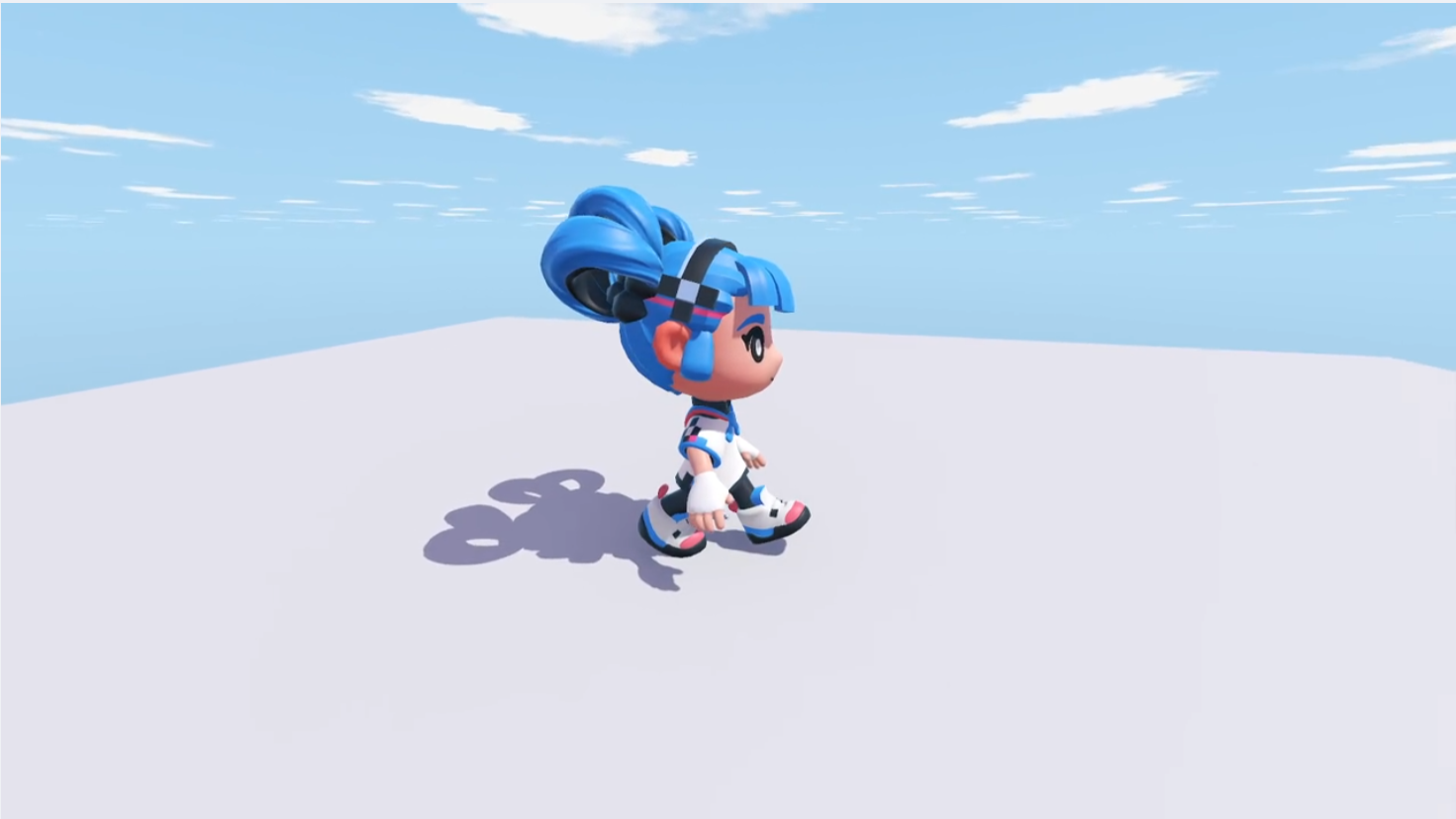
New rendering optimization technology
Godot 4 offers several new rendering optimization techniques.
New automatic occlusion culling detects models hidden by other geometry and dynamically removes them to improve CPU and GPU rendering performance.
In an open environment, few objects overlap, so occlusion culling doesn't help much. There you can take advantage of the new automatic mesh LOD or use manual HLOD for full control over the visible range .
Enhanced mid and post processing
Screen-space indirect lighting is available if you want to add extra quality when running on high-end devices .
SSIL allows the use of screen space sampling to enhance dark areas and indirect lighting. Additionally, with a powerful SSAO implementation (Screen Space Ambient Occlusion) you can access many useful settings such as light influence (how much direct light is affected), which can optimize quality by ignoring objects with ambient occlusion maps.
For users who enjoy photography, Godot 4.0 introduces realistic light units, allowing adjustment of light intensity and use of standard camera settings such as aperture, shutter speed and ISO to control the brightness of the final scene. Physical light units are off by default, but they can be enabled in the project settings.
2D improvement
Powerful new 2D level editing tools
As a major release breaking compatibility, Godot 4 introduces some fundamental changes to 2D workflows.
Probably the biggest improvement is the brand new tilemap editor, which has been redesigned based on requests and reports. The 2D editor has unified the workflow for tilesets and tilemaps, allowing more flexibility in organizing and placing tiles or providing them with metadata and animations, more efficient fine-tuning of collision, navigation, pivot points, and more tile properties.
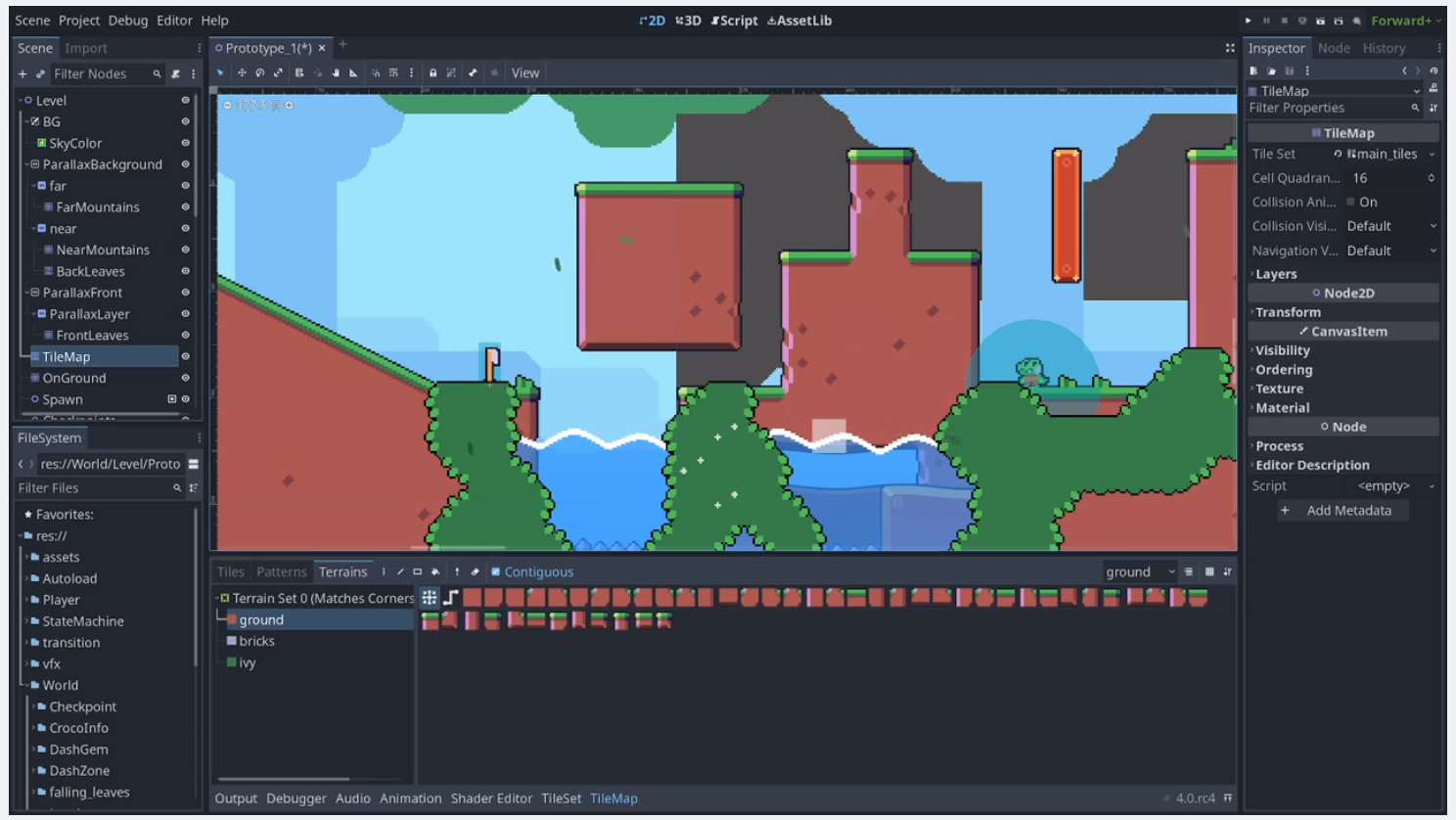
The new tilemap editor includes layers, a new terrain auto-tiling system for quickly painting large areas, a random paint system for scattering plants, rocks and other props, and for duplicating, marking and saving selections for later Reusable selection tool.
Tileset textures are automatically expanded to prevent gaps between tiles, and a new scene placement feature allows adding characters, boxes, and other interactive scenes in grid cells.
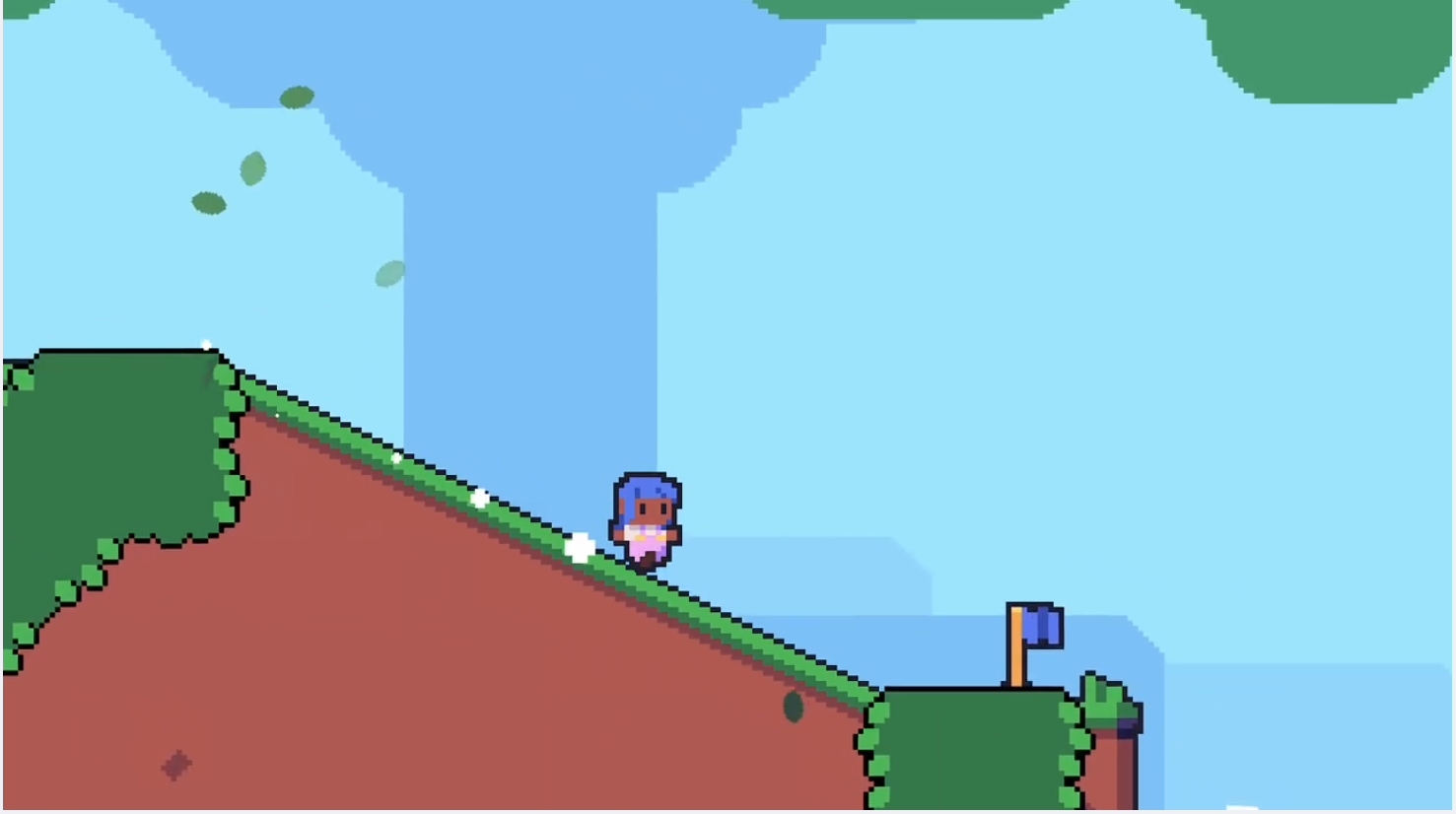
New 2D rendering options
The 2D Canvas Renderer has been updated to support Canvas Groups allowing complex blending of multiple overlapping CanvasItems. For example, you can stack a bunch of sprites together so they blend with the background as if they were a single item.
Use the new Clip Children property to use any 2D element as a mask. Finally, a Multisample Antialiasing (MSAA) option has been added to the 2D engine for better image quality and smoother edges.
Improved 2D lighting and shadows
2D received lighting improvements with 2D directional lights and shadows.
Using signed distance fields in shaders allows for advanced visual effects such as long shadows, halos, and sharp silhouettes. For 3D the light height can be controlled in the normal map.
Performance improves significantly when using multiple lights.
Shaders and Visual Effects
new atmospheric effects
To help improve the fidelity of 3D scenes, the new version has some exciting and long-awaited features.
Volumetric fog debuted in Godot 4, balancing a realistic look with fast performance, thanks to the use of temporal reprojection .
Effects can be configured globally, or define specific regions using FogVolume nodes , or even create complex dynamic effects by writing custom shaders that run on FogVolume nodes.
For other atmospheric effects, Godot 4.0 introduces a sky shader, allowing users to create dynamic skies (including reflections) that update in real time. See the article introducing the sky shader for more details .
Texture and Material Projection
In addition to the new noise textures backported to Godot 3.5, 4.0 introduces decals , which can now project materials onto surfaces to decorate environments.
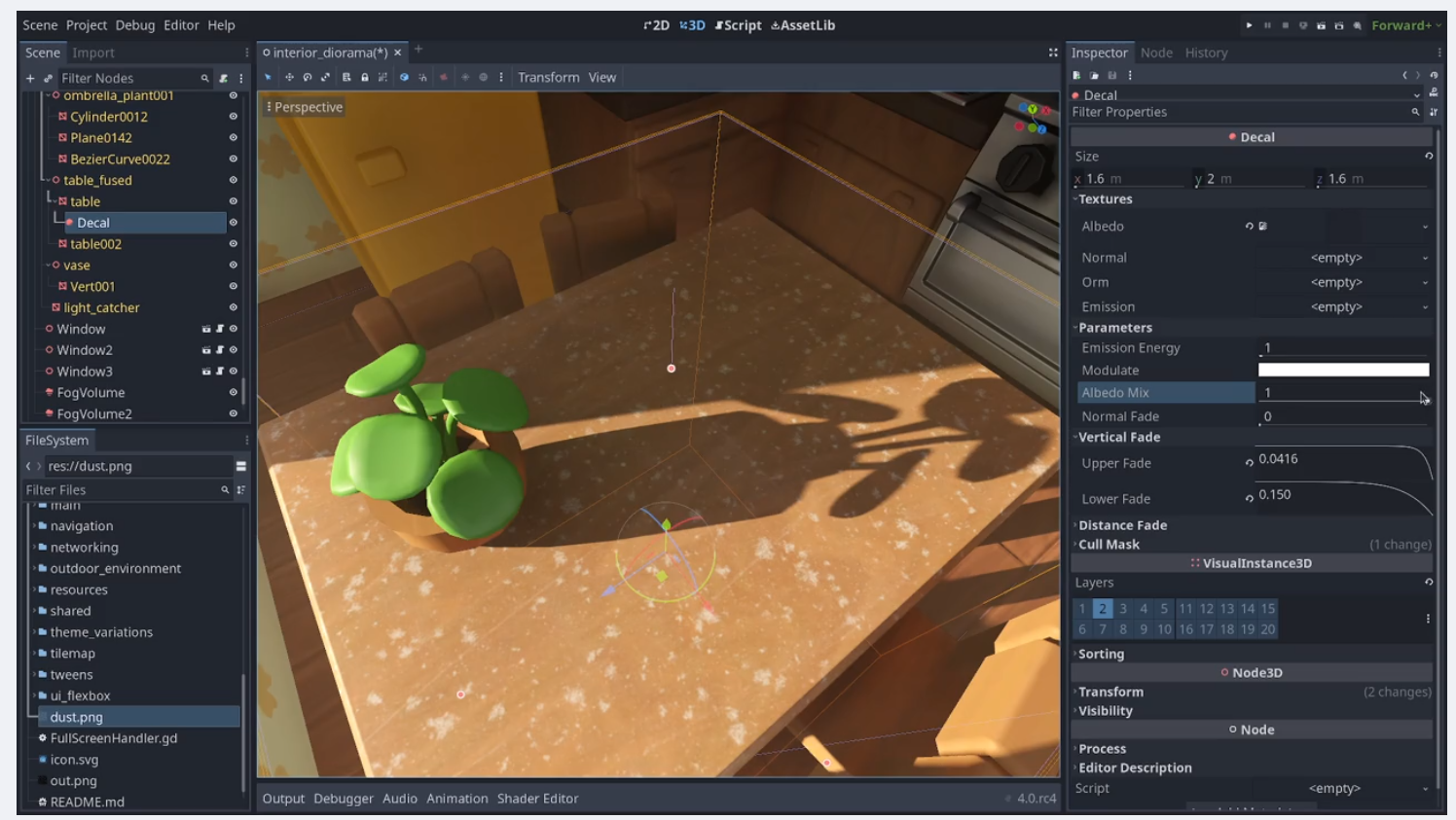
Enhanced Shader-Game World Interaction
Lots of useful changes to GPU based particles. Attraction, collision, trajectory, sub-emitter and manual emission are now supported.
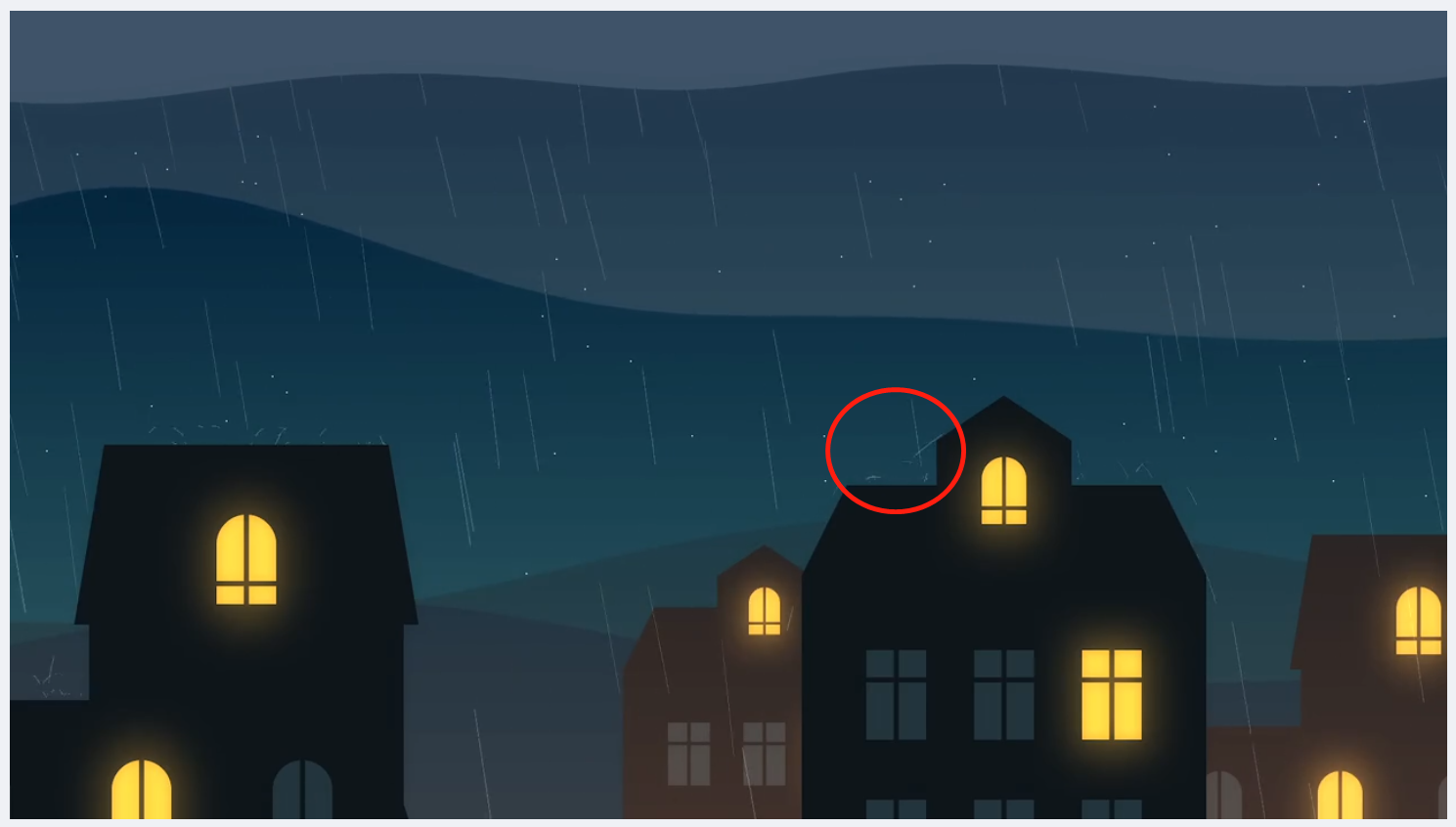
For effects that apply to the entire game world, such as wind direction or humidity levels, global values can now be shared across materials.
Improved shader editor
The introduction of all these new features once again creates an opportunity to improve the form and function of the visual shader editor.
Extended Shader Language
New additions include support for uniform array and fragment-to-light variations , as well as new syntax features such as structs , preprocessor macros, and shader inclusion .
compute shader
Godot now supports and uses compute shaders to accelerate algorithms using graphics cards.
There are a lot of other content in this version. For details, you can click the corresponding link to jump to read.
- Scripting
- Physics
- UI & Text
- Internationalization
- Editor & UX
- Navigation
- XR
- Networking & Multiplayer
- Audio
- Animation
- Platform Support
- Future
For Godot 3 LTS version users, related features and bug fixes will be backported to the upcoming Godot 3.6, which is planned to be maintained continuously to support existing Godot 3 projects. Throughout the development of Godot 4, the team has been backporting a lot of compatibility and related work, and some new features have made their way into Godot 3.4 and 3.5.
